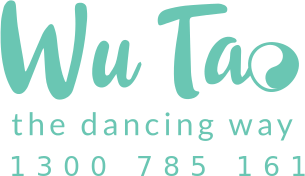Our blog
Daily inspiration + Information
Dancing away the pain
Words: Olga de Moller
West Australian newspaper
“Alternatives” section,
Wednesday, February 12, 2003
Artist Jan Swinney is dancing her way to wellbeing after battling a chronic illness which left her perpetually exhausted with debilitating joint pain.
Diagnosed with systemic lupus erythematosus (SLE) – an auto-immune inflammatory disease – four years ago, she turned to acupuncture and tai chi for relief but has found a dance therapy based on oriental medicine to be a remarkable stepping stone in renewing her zest for life.
Swinney believes Wu Tao (“The Dancing Way”) has been instrumental in the healing process by balancing her body, which has resulted in less joint pain, more energy and a greater sense of wellbeing.
“I started having acupuncture four years ago and took up tai chi, which I’d done previously, when I got better, but felt I needed something more,” she said.
“That’s when I came across Wu Tao, which has opened my body so the energy can flow through the meridians.”
“I may not be as graceful as some of the other people in my class and have to modify the movements to suit my abilities but it’s remarkably freeing and very balancing nonetheless.”
Developed by former ballerina Michelle Locke, Wu Tao is based on a series of five dances which balance the body’s chi, or life force, by activating and stretching the meridians, which, according to oriental medicine, are the channels through which our energy flows.
Each dance creatively expresses one of the five elements – air, water, wood, fire and earth – which each governs a pair of meridians.
Locke established the Shiatsu School of WA in 1993 after finding the ancient Japanese therapy was the only thing that relieved a painful soft tissue injury which forced her to give up her career with the WA Ballet Company several years earlier.
She has since sold the school to one of her students but went on to use her training in shiatsu to develop Wu Tao, which she teaches around Australia.
“It provides all the benefits of shiatsu without having to lie down for a massage,” she said.
“Some people take it up because they have physical problems but a lot come in simply because they love to dance and enjoy it as a form of exercise.”
Because diet was an integral part of oriental medicine, participants were also given guidelines on nutrition, with recipes combining Eastern and Western culinary traditions.
The dances consist of precise movements involving gentle stretching, swaying, bending and floor rolls, to open the meridians, which can produce a pleasant tingling sensation or warmth in the body.
In the air dance, participants visualize themselves as big birds flying through the sky to activate the lung and large intestine channels in the body. Locke said this dance, the first in the sequence, was designed to release grief and sadness, build a strong immune system and help relieve lung and breathing conditions, such as asthma and bronchitis.
The water dance was good for fatigue, back problems and releasing fear, while the fire dance was designed to put people in touch with their true self and develop healthy boundaries and clarity of mind.
In the wood dance, which frees the chi in the liver and gall bladder meridians, participants become the growing tree to release blocked and stagnant energy, balance strong emotions and improve the flexibility of mind and body.
The earth dance, the last in the sequence, starts with a series of leg raises, knee bends and arm stretches. It is intended to give thanks for everything in life and encourages the individual to nourish, love, nurture and support themselves.
Locke described Wu Tao as both movement and stillness, doing and being.
“It encourages the development of these qualities and an experience of being in the flow of the life force,” she said.
“In Wu Tao, while one is focused on doing the routine with the music, the mind becomes still and the body poised and balanced.”
Ulla McAllister, who has been doing Wu Tao for a year, is a convert. She said the dance sequence engendered a great sense of rapport in her group and had helped her put life into perspective.
“I don’t worry about things any more,” she said. “It’s very powerful and relaxing.”
Pria Martin said she had taken up Wu Tao because she wanted something with more movement than yoga.
“I have found very real physical, mental, emotional and spiritual benefits,” she said. “It stimulates the meridians and internal organs while toning the whole body.”
Locke will hold a demonstration class at the East Fremantle Lawn Tennis Club, on the corner of Petra Street and Preston Point Road, today at 7pm. Dance classes start this month in East Fremantle, Fremantle, Cottesloe, Floreat, Subiaco and Mandurah. Inquiries to 0417 989 397.
